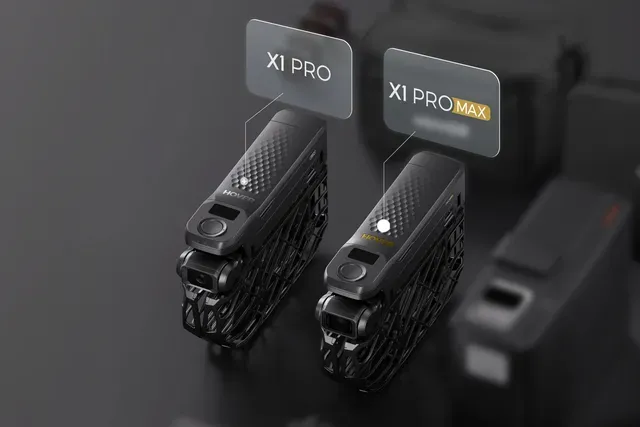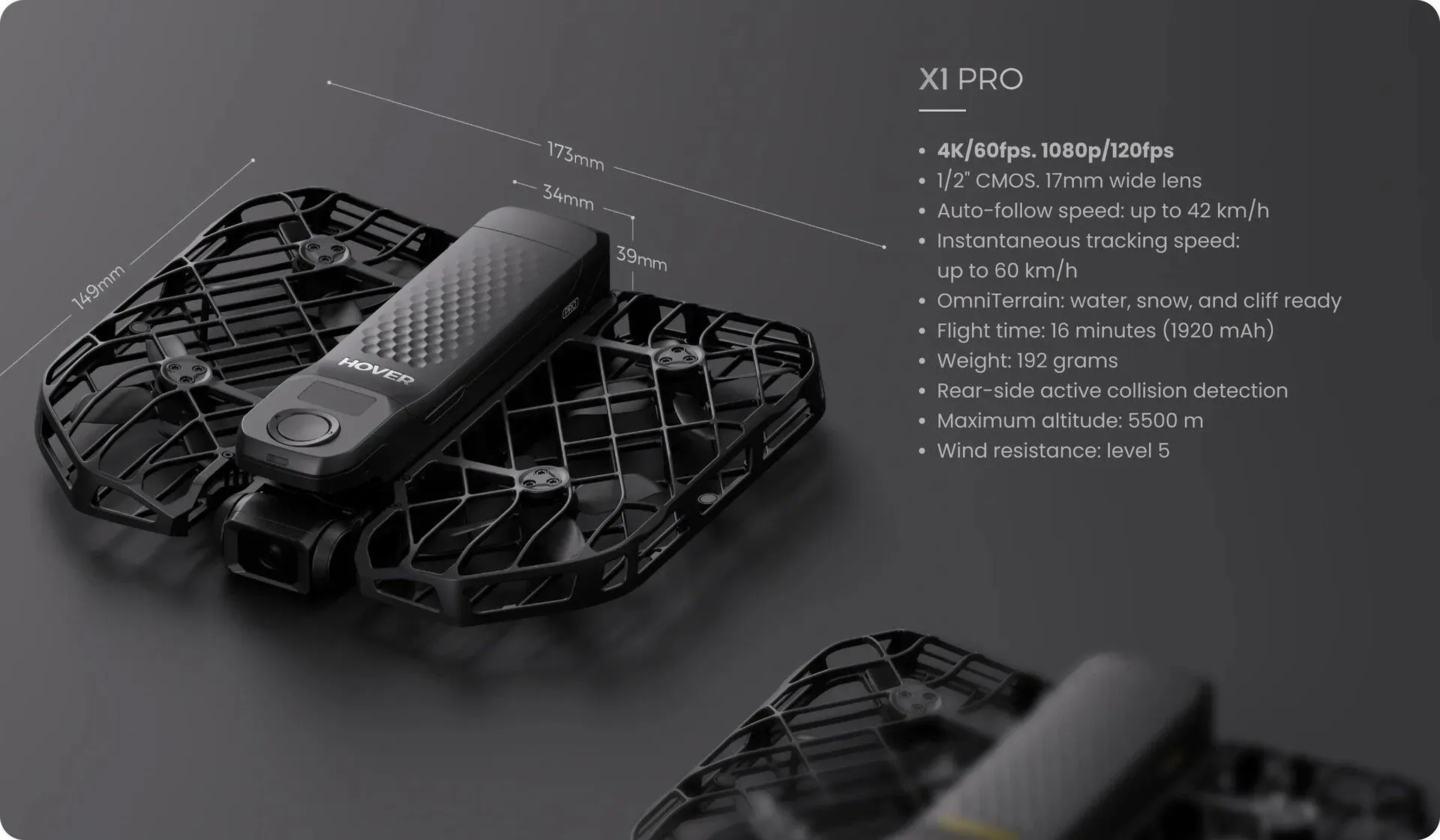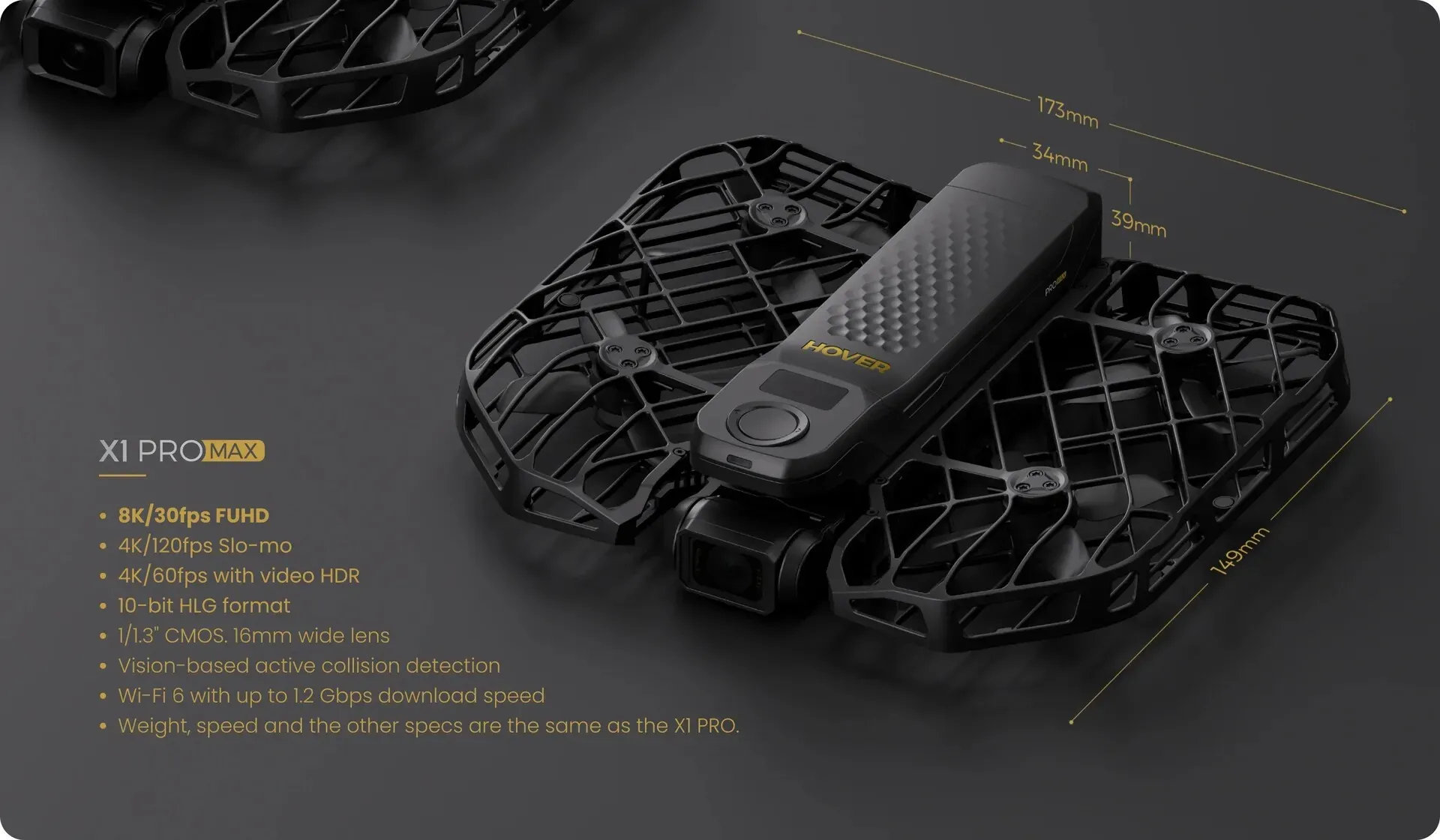HoverAir Quietly Unveils X1 Pro and X1 Pro Max Drones with Advanced Features

HoverAir Quietly Unveils X1 Pro and X1 Pro Max Drones with Advanced Features
HoverAir has discreetly introduced two new drone models, the X1 Pro and X1 Pro Max, following the success of the X1. Both devices feature significant software upgrades and design improvements, although the extent of these changes varies between models.
Key Features of X1 Pro

The X1 Pro comes equipped with a 1/2-inch CMOS sensor and a wide-angle lens with a 17mm focal length. This camera supports 4K video recording at 60fps and 1080p at 120fps. The drone is also faster than its predecessor, offering auto-tracking at speeds up to 42 km/h, making it ideal for tracking users on bikes or during runs.
Design-wise, the X1 Pro is more streamlined compared to the previous X1 model. It has larger dimensions of 149 x 173 x 39 mm and weighs 192 grams. Notable upgrades include active collision sensors on the rear and the ability to fly over water, snow, and off cliffs.
One significant issue with the old X1 was its VIO (Visual Inertial Odometry) system, which could fail when tracking "moving textures" like rippling water, potentially causing the drone to crash. The new model aims to address these concerns.
An intriguing addition is a button located above the screen on the drone's top side. While its exact function is still unclear, online speculation suggests it might be used for selecting unique flight paths.
X1 Pro Max: 8K Recording Capabilities

The X1 Pro Max shares many similarities with the X1 Pro, including its size, features, and 16-minute flight time. The main visible difference is the company logo, which is in gold instead of silver. However, the most significant upgrades lie within.
The Pro Max features a 1/1.3-inch CMOS sensor and a wide-angle lens with a 16mm focal length, allowing it to record 8K video at 30fps, as well as 4K at 60 or 120fps for slow-motion effects. The video is saved in 10-bit HLG format, providing ample detail and color information for post-editing. Additionally, the drone supports a collision-avoidance system powered by computer vision and Wi-Fi 6.
Awaiting Further Details
Currently, pricing and availability details for the new models are not yet available. HoverAir has also teased some blurry accessories on the preview page, possibly indicating carrying cases, spare batteries, and charging devices. More information is expected to be released soon.
These advanced features position HoverAir as a strong competitor in the drone market, especially against upcoming releases like DJI's Neo, which is targeted towards beginners.
